Cloudflare Files IPO Paperwork to Battle AWS, Cisco, and Oracle
It also directly competes against CDN firms like Akamai, Limelight, and Fastly, which went public...
Cloudflare Global Network Expands to 193 Cities

Cloudflare’s global network currently spans 193 cities across 90+ countries. With over 20 million Internet properties on our network, we increase the security, performance, and reliability of large portions of the Internet every time we add a location.

Expanding Network to New Cities
So far in 2019, we’ve added a score of new locations: Amman, Antananarivo*, Arica*, Asunción, Bengaluru, Buffalo, Casablanca, Córdoba*, Cork, Curitiba, Dakar*, Dar es Salaam, Fortaleza, Göteborg, Guatemala City, Hyderabad, Kigali, Kolkata, Male*, Maputo, Nagpur, Neuquén*, Nicosia, Nouméa, Ottawa, Port-au-Prince, Porto Alegre, Querétaro, Ramallah, and Thessaloniki.
Our Humble Beginnings
When Cloudflare launched in 2010, we focused on putting servers at the Internet’s crossroads: large data centers with key connections, like the Amsterdam Internet Exchange and Equinix Ashburn. This not only provided the most value to the most people at once but was also easier to manage by keeping our servers in the same buildings as all the local ISPs, server providers, and other people they needed to talk to streamline our services.
This is a great approach for bootstrapping a global network, but we’re obsessed with speed in general. There are over five hundred cities in the world with over one million inhabitants, but only a handful Continue reading
Building a GraphQL server on the edge with Cloudflare Workers
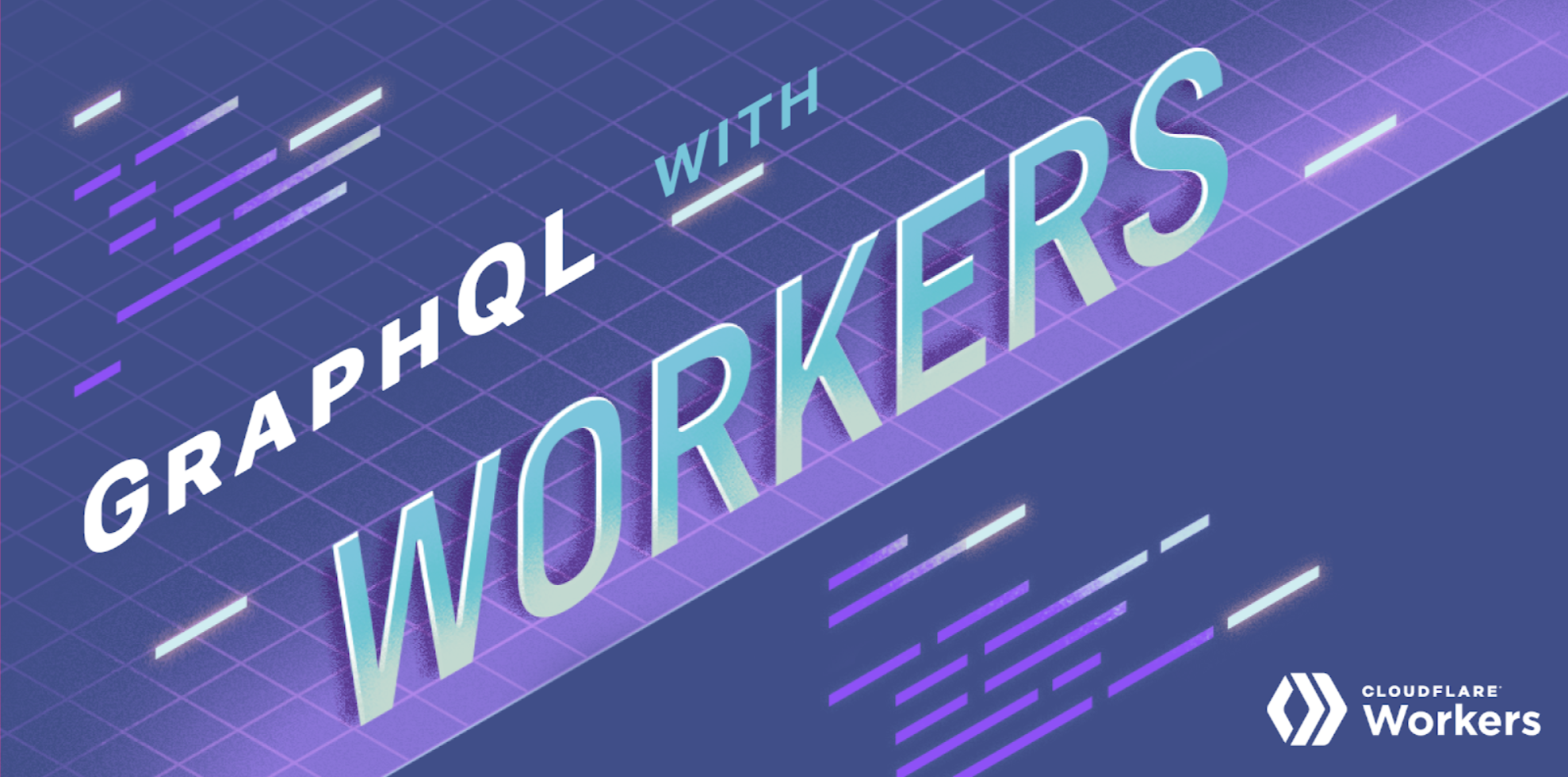
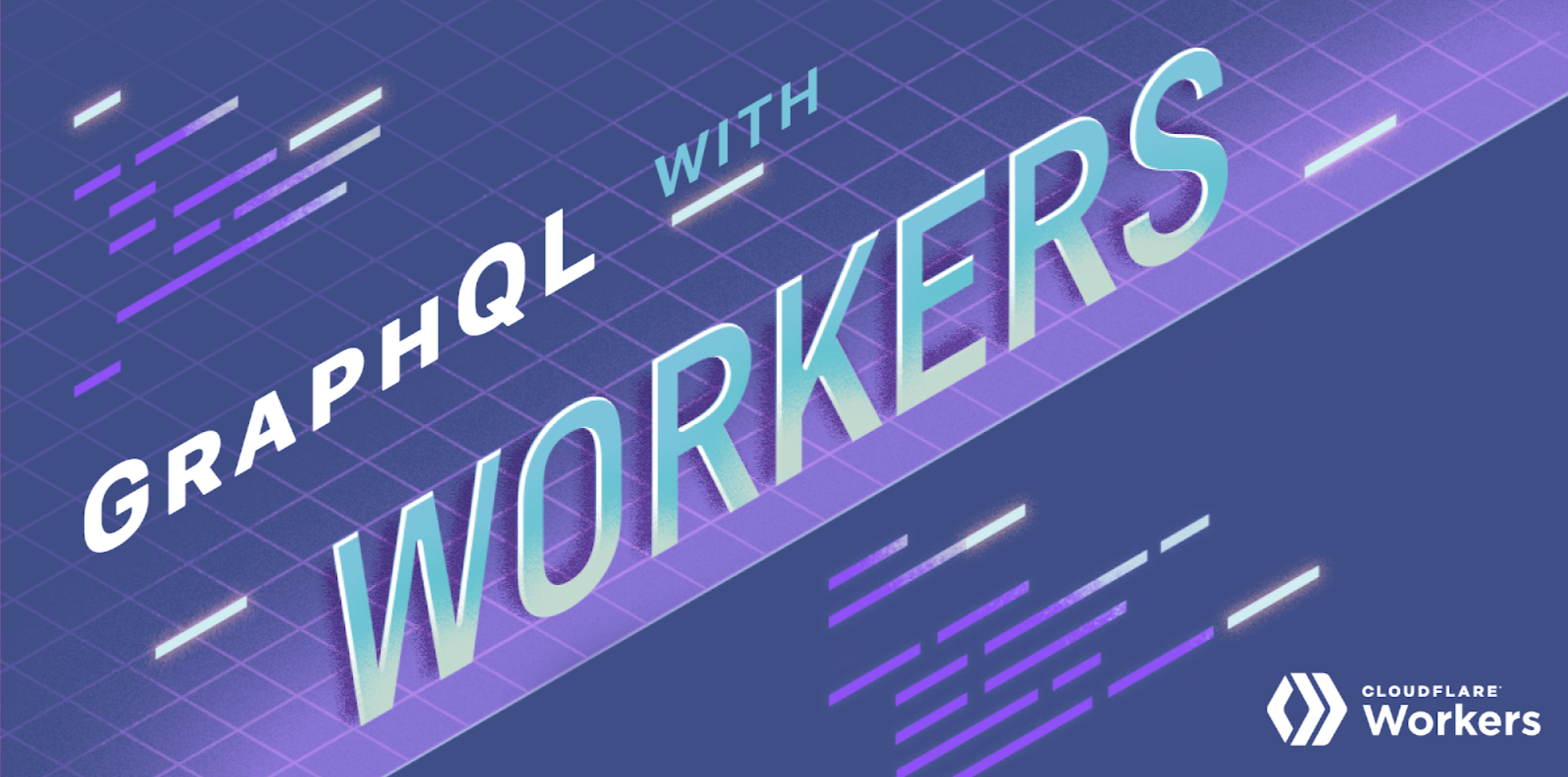
Today, we're open-sourcing an exciting project that showcases the strengths of our Cloudflare Workers platform: workers-graphql-server is a batteries-included Apollo GraphQL server, designed to get you up and running quickly with GraphQL.

As a full-stack developer, I’m really excited about GraphQL. I love building user interfaces with React, but as a project gets more complex, it can become really difficult to manage how your data is managed inside of an application. GraphQL makes that really easy - instead of having to recall the REST URL structure of your backend API, or remember when your backend server doesn't quite follow REST conventions - you just tell GraphQL what data you want, and it takes care of the rest.
Cloudflare Workers is uniquely suited as a platform to being an incredible place to host a GraphQL server. Because your code is running on Cloudflare's servers around the world, the average latency for your requests is extremely low, and by using Wrangler, our open-source command line tool for building and managing Workers projects, you can deploy new versions of your GraphQL server around the world within seconds.
If you'd like to try the GraphQL Continue reading
On the recent HTTP/2 DoS attacks

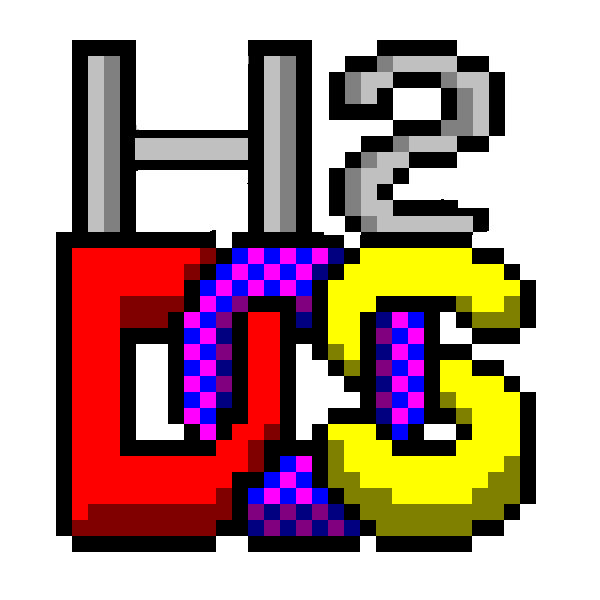
Today, multiple Denial of Service (DoS) vulnerabilities were disclosed for a number of HTTP/2 server implementations. Cloudflare uses NGINX for HTTP/2. Customers using Cloudflare are already protected against these attacks.
The individual vulnerabilities, originally discovered by Netflix and are included in this announcement are:
- CVE-2019-9511 HTTP/2 Data Dribble
- CVE-2019-9512 HTTP/2 Ping Flood
- CVE-2019-9513 HTTP/2 Resource Loop
- CVE-2019-9514 HTTP/2 Reset Flood
- CVE-2019-9515 HTTP/2 Settings Flood
- CVE-2019-9516 HTTP/2 0-Length Headers Leak
- CVE-2019-9518 HTTP/2 Request Data/Header Flood
As soon as we became aware of these vulnerabilities, Cloudflare’s Protocols team started working on fixing them. We first pushed a patch to detect any attack attempts and to see if any normal traffic would be affected by our mitigations. This was followed up with work to mitigate these vulnerabilities; we pushed the changes out few weeks ago and continue to monitor similar attacks on our stack.
If any of our customers host web services over HTTP/2 on an alternative, publicly accessible path that is not behind Cloudflare, we recommend you apply the latest security updates to your origin servers in order to protect yourselves from these HTTP/2 vulnerabilities.
We will soon follow up with more details on these vulnerabilities and how we mitigated them.
Full Continue reading
Magic Transit makes your network smarter, better, stronger, and cheaper to operate

Today we’re excited to announce Cloudflare Magic Transit. Magic Transit provides secure, performant, and reliable IP connectivity to the Internet. Out-of-the-box, Magic Transit deployed in front of your on-premise network protects it from DDoS attack and enables provisioning of a full suite of virtual network functions, including advanced packet filtering, load balancing, and traffic management tools.

Magic Transit is built on the standards and networking primitives you are familiar with, but delivered from Cloudflare’s global edge network as a service. Traffic is ingested by the Cloudflare Network with anycast and BGP, announcing your company’s IP address space and extending your network presence globally. Today, our anycast edge network spans 193 cities in more than 90 countries around the world.
Once packets hit our network, traffic is inspected for attacks, filtered, steered, accelerated, and sent onward to the origin. Magic Transit will connect back to your origin infrastructure over Generic Routing Encapsulation (GRE) tunnels, private network interconnects (PNI), or other forms of peering.
Enterprises are often forced to pick between performance and security when deploying IP network services. Magic Transit is designed from the ground up to minimize these trade-offs: performance and security are better together. Magic Transit deploys IP security Continue reading
Magic Transit: Network functions at Cloudflare scale

Today we announced Cloudflare Magic Transit, which makes Cloudflare’s network available to any IP traffic on the Internet. Up until now, Cloudflare has primarily operated proxy services: our servers terminate HTTP, TCP, and UDP sessions with Internet users and pass that data through new sessions they create with origin servers. With Magic Transit, we are now also operating at the IP layer: in addition to terminating sessions, our servers are applying a suite of network functions (DoS mitigation, firewalling, routing, and so on) on a packet-by-packet basis.
Over the past nine years, we’ve built a robust, scalable global network that currently spans 193 cities in over 90 countries and is ever growing. All Cloudflare customers benefit from this scale thanks to two important techniques. The first is anycast networking. Cloudflare was an early adopter of anycast, using this routing technique to distribute Internet traffic across our data centers. It means that any data center can handle any customer’s traffic, and we can spin up new data centers without needing to acquire and provision new IP addresses. The second technique is homogeneous server architecture. Every server in each of our edge data centers is capable of running every task. We Continue reading
The Serverlist: Building out the SHAMstack
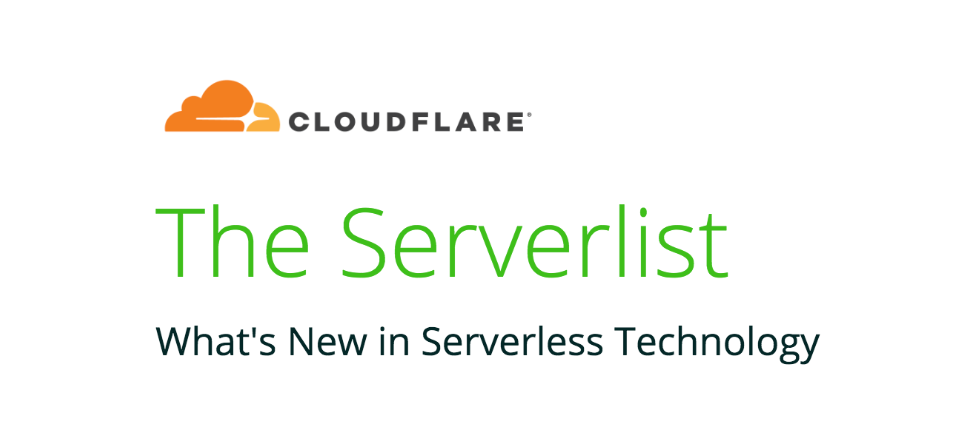
Check out our seventh edition of The Serverlist below. Get the latest scoop on the serverless space, get your hands dirty with new developer tutorials, engage in conversations with other serverless developers, and find upcoming meetups and conferences to attend.
Sign up below to have The Serverlist sent directly to your mailbox.
Introducing Certificate Transparency Monitoring


Today we’re launching Certificate Transparency Monitoring (my summer project as an intern!) to help customers spot malicious certificates. If you opt into CT Monitoring, we’ll send you an email whenever a certificate is issued for one of your domains. We crawl all public logs to find these certificates quickly. CT Monitoring is available now in public beta and can be enabled in the Crypto Tab of the Cloudflare dashboard.
Background
Most web browsers include a lock icon in the address bar. This icon is actually a button — if you’re a security advocate or a compulsive clicker (I’m both), you’ve probably clicked it before! Here’s what happens when you do just that in Google Chrome:

This seems like good news. The Cloudflare blog has presented a valid certificate, your data is private, and everything is secure. But what does this actually mean?
Certificates
Your browser is performing some behind-the-scenes work to keep you safe. When you request a website (say, cloudflare.com), the website should present a certificate that proves its identity. This certificate is like a stamp of approval: it says that your connection is secure. In other words, the certificate proves that content was not intercepted or Continue reading
Terminating Service for 8Chan
The mass shootings in El Paso, Texas and Dayton, Ohio are horrific tragedies. In the case of the El Paso shooting, the suspected terrorist gunman appears to have been inspired by the forum website known as 8chan. Based on evidence we've seen, it appears that he posted a screed to the site immediately before beginning his terrifying attack on the El Paso Walmart killing 20 people.
Unfortunately, this is not an isolated incident. Nearly the same thing happened on 8chan before the terror attack in Christchurch, New Zealand. The El Paso shooter specifically referenced the Christchurch incident and appears to have been inspired by the largely unmoderated discussions on 8chan which glorified the previous massacre. In a separate tragedy, the suspected killer in the Poway, California synagogue shooting also posted a hate-filled “open letter” on 8chan. 8chan has repeatedly proven itself to be a cesspool of hate.
8chan is among the more than 19 million Internet properties that use Cloudflare's service. We just sent notice that we are terminating 8chan as a customer effective at midnight tonight Pacific Time. The rationale is simple: they have proven themselves to be lawless and that lawlessness has caused multiple tragic deaths. Even if Continue reading
Dynatrace Scores $544M IPO, Cloudflare to Follow Suit
Dynatrace raised $544 million in its initial public offering (IPO) today, selling 35.6 million...
Why I’m Helping Cloudflare Grow in Australia & New Zealand (A/NZ)


I’ve recently joined Cloudflare as Head of Australia and New Zealand (A/NZ). This is an important time for the company as we continue to grow our presence locally to address the demand in A/NZ, recruit local talent, and build on the successes we’ve had in our other offices around the globe. In this new role, I’m eager to grow our brand recognition in A/NZ and optimise our reach to customers by building up my team and channel presence.
A little about me
I’m a Melburnian born and bred (most livable city in the world!) with more than 20 years of experience in our market. From guiding strategy and architecture of the region’s largest resources company, BHP, to building and running teams and channels, and helping customers solve the technical challenges of their time, I have been in, or led, businesses in the A/NZ Enterprise market, with a focus on network and security for the last six years.
Why Cloudflare?
I joined Cloudflare because I strongly believe in its mission to help build a better Internet, and believe this mission, paired with its massive global network, will enable the company to continue to deliver incredibly innovative solutions to customers of Continue reading
Securing infrastructure at scale with Cloudflare Access
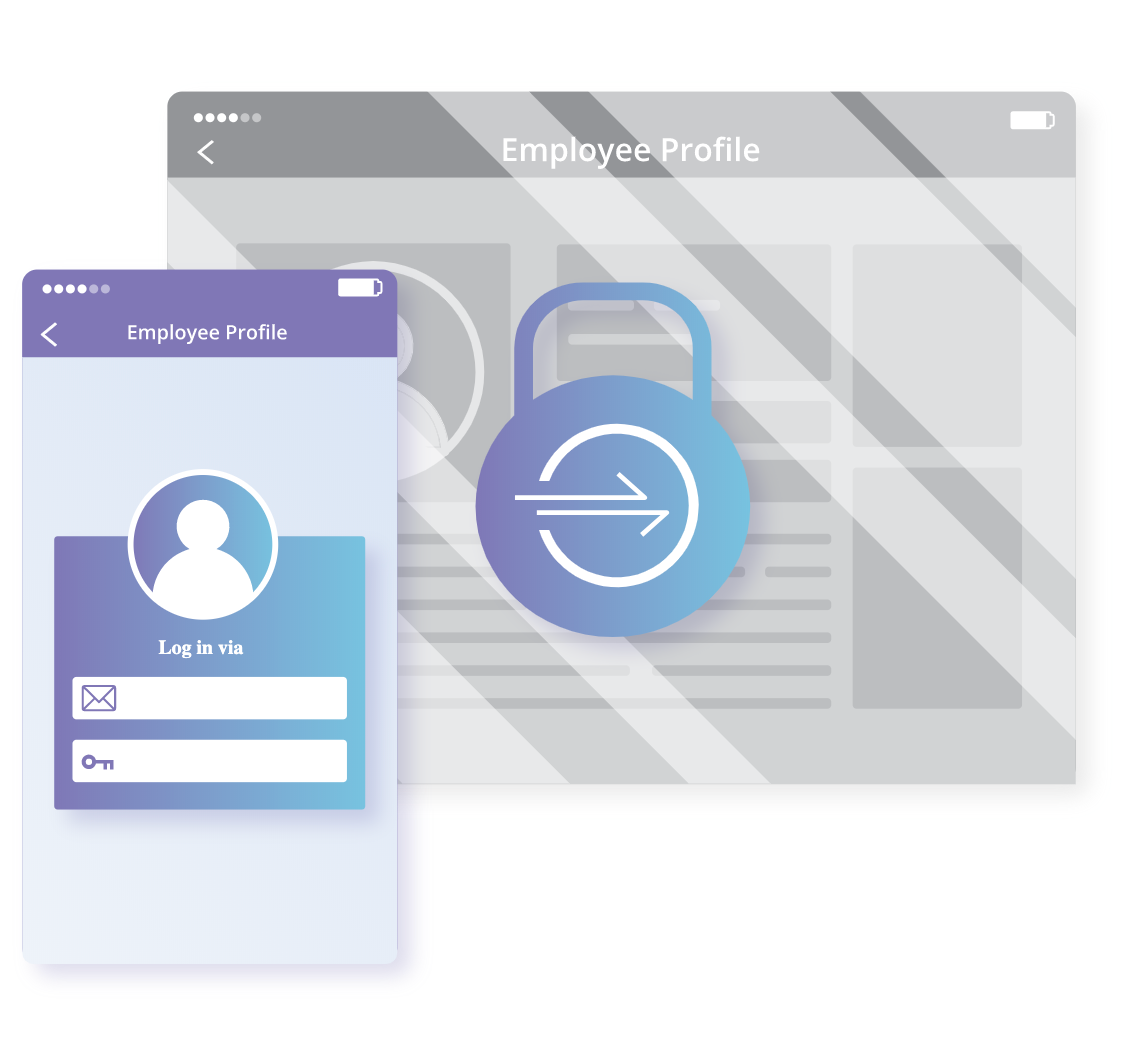
I rarely have to deal with the hassle of using a corporate VPN and I hope it remains this way. As a new member of the Cloudflare team, that seems possible. Coworkers who joined a few years ago did not have that same luck. They had to use a VPN to get any work done. What changed?
Cloudflare released Access, and now we’re able to do our work without ever needing a VPN again. Access is a way to control access to your internal applications and infrastructure. Today, we’re releasing a new feature to help you replace your VPN by deploying Access at an even greater scale.
Access in an instant
Access replaces a corporate VPN by evaluating every request made to a resource secured behind Access. Administrators can make web applications, remote desktops, and physical servers available at dedicated URLs, configured as DNS records in Cloudflare. These tools are protected via access policies, set by the account owner, so that only authenticated users can access those resources. These end users are able to be authenticated over both HTTPS and SSH requests. They’re prompted to login with their SSO credentials and Access redirects them to the application or server.
A Tale of Two (APT) Transports

Securing access to your APT repositories is critical. At Cloudflare, like in most organizations, we used a legacy VPN to lock down who could reach our internal software repositories. However, a network perimeter model lacks a number of features that we consider critical to a team’s security.
As a company, we’ve been moving our internal infrastructure to our own zero-trust platform, Cloudflare Access. Access added SaaS-like convenience to the on-premise tools we managed. We started with web applications and then moved resources we need to reach over SSH behind the Access gateway, for example Git or user-SSH access. However, we still needed to handle how services communicate with our internal APT repository.
We recently open sourced a new APT transport which allows customers to protect their private APT repositories using Cloudflare Access. In this post, we’ll outline the history of APT tooling, APT transports and introduce our new APT transport for Cloudflare Access.
A brief history of APT
Advanced Package Tool, or APT, simplifies the installation and removal of software on Debian and related Linux distributions. Originally released in 1998, APT was to Debian what the App Store was to modern smartphones - a decade ahead of its time!
Cloudflare em Lisboa
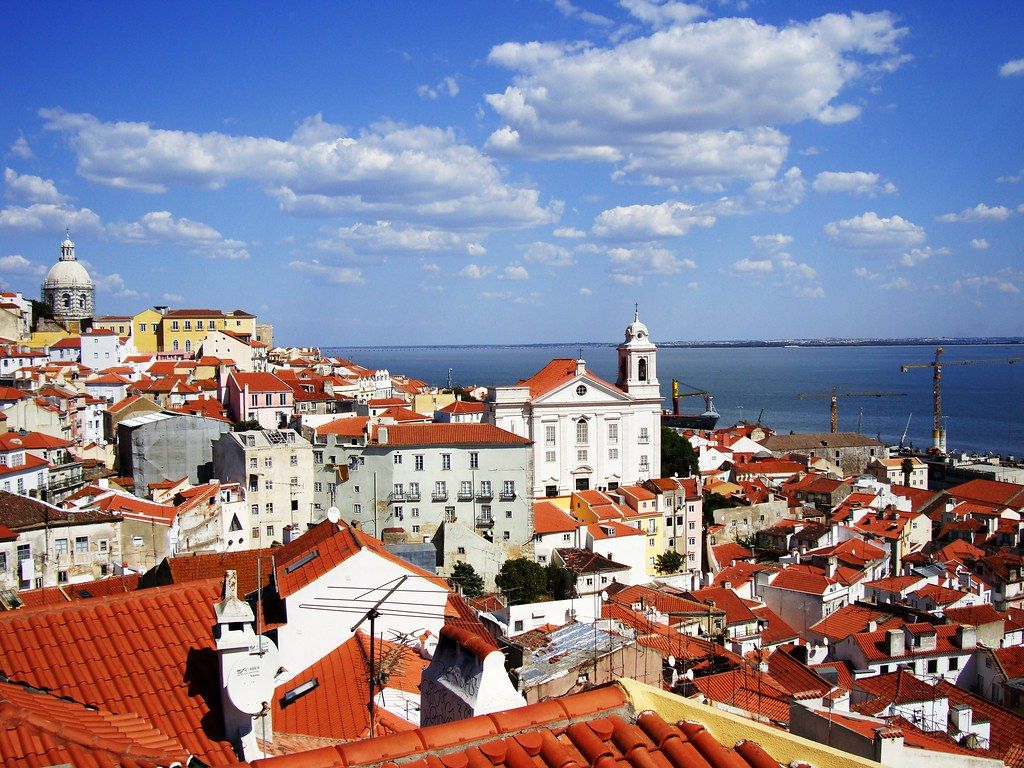
Eu fui o 24º funcionário da Cloudflare e o primeiro a trabalhar fora de São Francisco. A trabalhar num escritório improvisado em minha casa, e escrevi um pedaço grande do software da Cloudflare antes de ter contratato uma equipa em Londres. Hoje, Cloudflare London, a nossa a sede da EMEA a região da Europa, Médio Oriente e África tem mais de 200 pessoas a trabalhar no edifício histórico County Hall á frente do Parlamento Britânico. O meu escritório improvisado é agora história antiga.
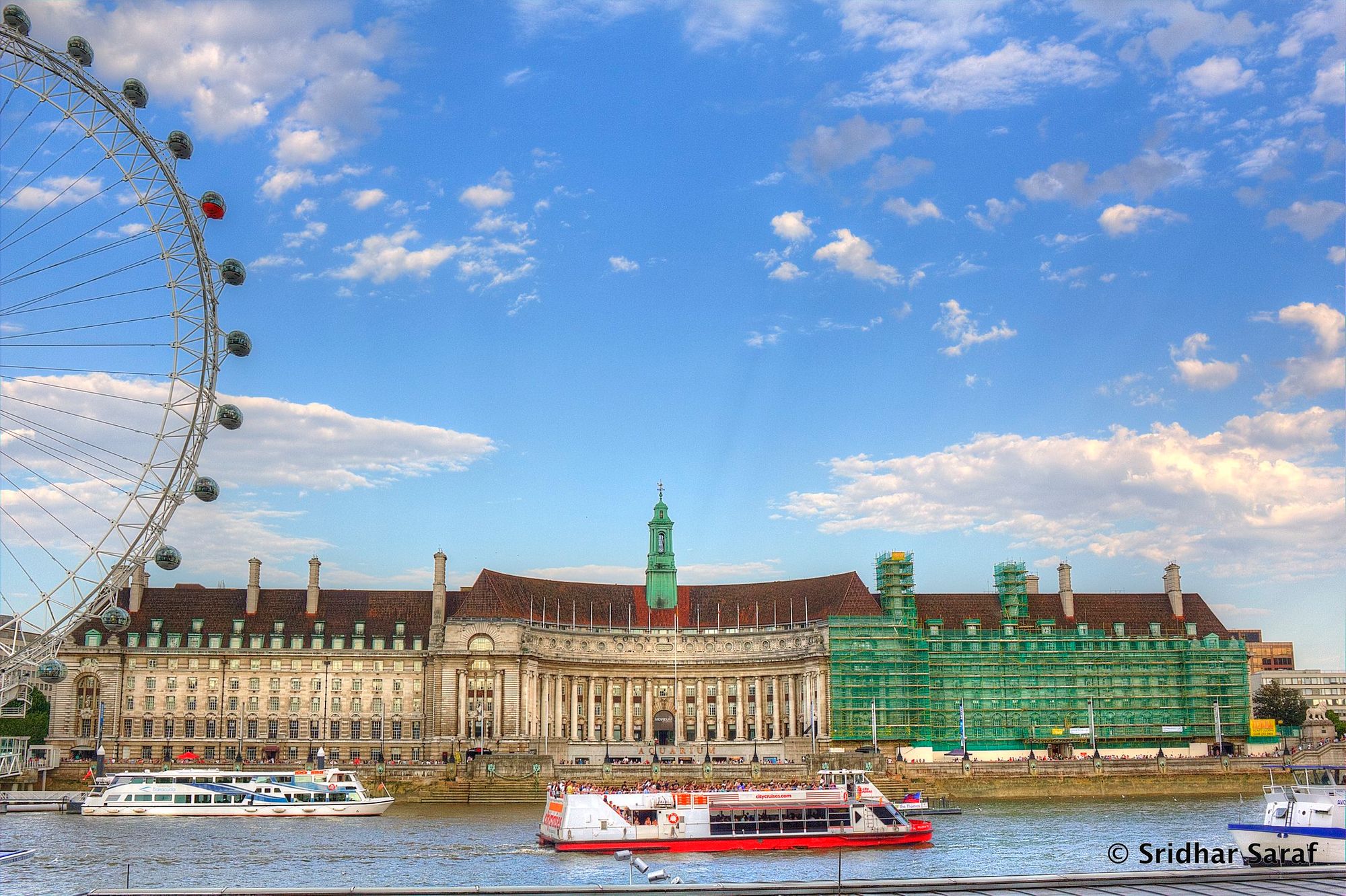
Cloudflare não parou em Londres. Temos pessoas em Munique, Singapura, Pequim, Austin, Texas, Chicago e Champaign, Illinois, Nova York, Washington,DC, São José, Califórnia, Miami, Florida, Sydney, Austrália e também em Sao Francisco e Londres. Hoje estamos a anunciar o estabelecimento de um novo escritório em Lisboa, Portugal. Como parte da abertura do escritório este Verão irei me deslocar para Lisboa juntamente com um pequeno número de pessoal técnico de outros escritórios da Cloudflare.
Estamos a recrutar em Lisboa neste momento. Pode visitar este link para ver todas as oportunidades actuais. Estamos á procura de candidatos para preencher os cargos de Engenheiro, Segurança, Produto, Produto de Estratégia, Investigação Tecnológica e Continue reading
Cloudflare’s new Lisbon office
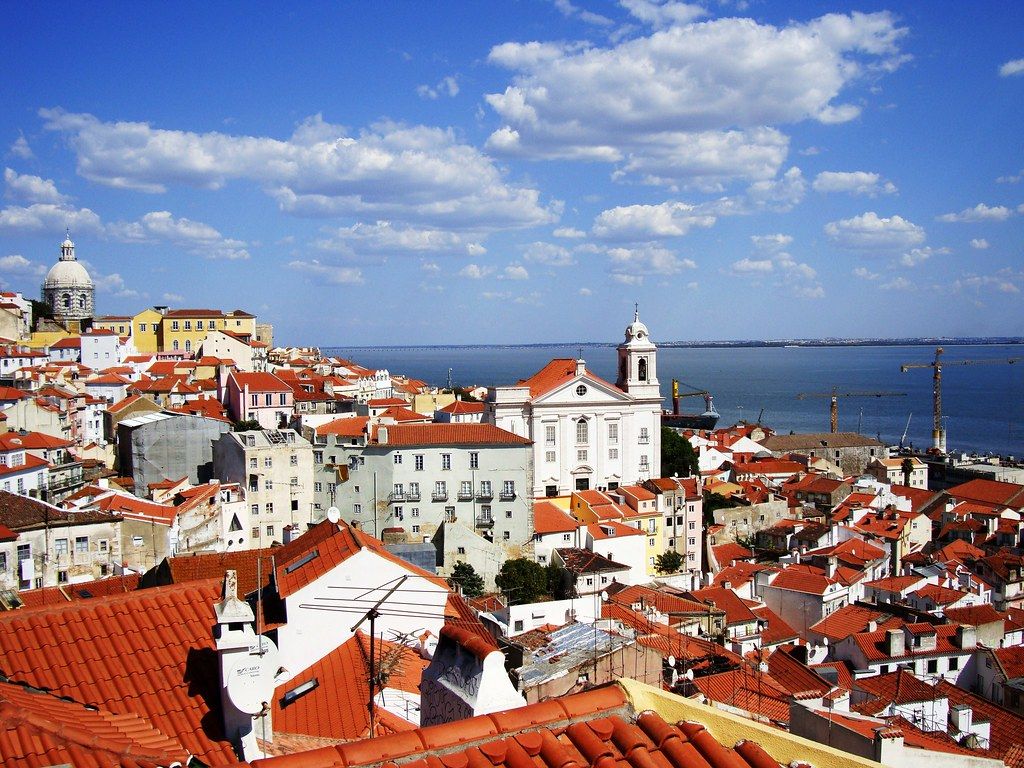
I was the 24th employee of Cloudflare and the first outside of San Francisco. Working out of my spare bedroom, I wrote a chunk of Cloudflare’s software before starting to recruit a team in London. Today, Cloudflare London, our EMEA headquarters, has more than 200 people working in the historic County Hall building opposite the Houses of Parliament. My spare bedroom is ancient history.
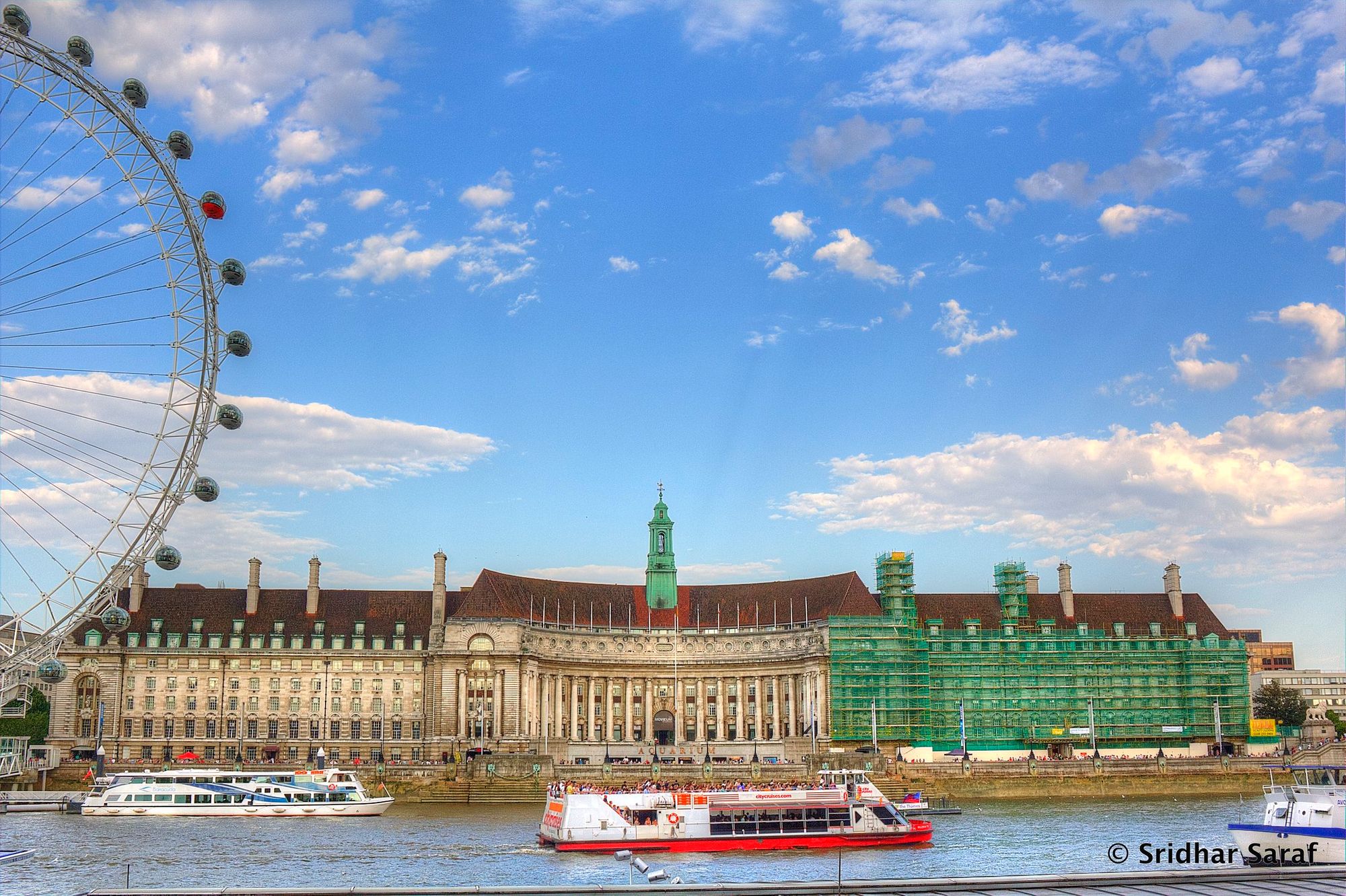
And Cloudflare didn’t stop at London. We now have people in Munich, Singapore, Beijing, Austin, TX, Chicago and Champaign, IL, New York, Washington, DC, San Jose, CA, Miami, FL, and Sydney, Australia, as well as San Francisco and London. And today we’re announcing the establishment of a new technical hub in Lisbon, Portugal. As part of that office opening I will be relocating to Lisbon this summer along with a small number of technical folks from other Cloudflare offices.
We’re recruiting in Lisbon starting today. Go here to see all the current opportunities. We’re looking for people to fill roles in Engineering, Security, Product, Product Strategy, Technology Research, and Customer Support.
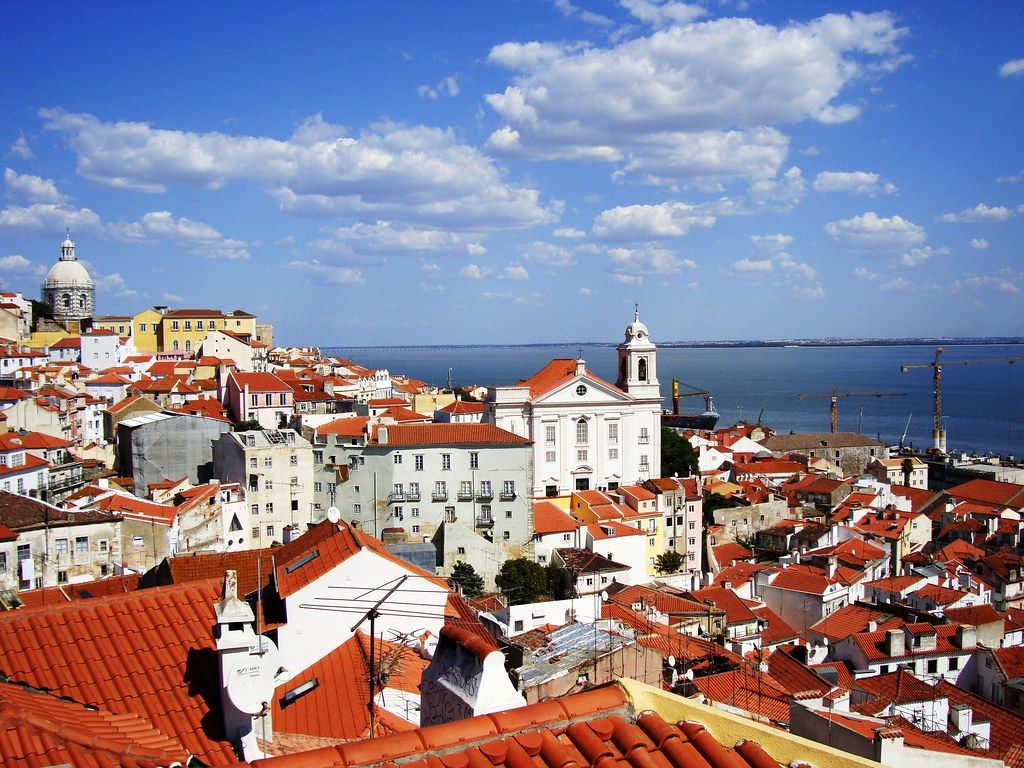
My first real idea of Lisbon dates to 30 Continue reading
Details of the Cloudflare outage on July 2, 2019
Almost nine years ago, Cloudflare was a tiny company and I was a customer not an employee. Cloudflare had launched a month earlier and one day alerting told me that my little site, jgc.org, didn’t seem to have working DNS any more. Cloudflare had pushed out a change to its use of Protocol Buffers and it had broken DNS.
I wrote to Matthew Prince directly with an email titled “Where’s my dns?” and he replied with a long, detailed, technical response (you can read the full email exchange here) to which I replied:
From: John Graham-Cumming
Date: Thu, Oct 7, 2010 at 9:14 AM
Subject: Re: Where's my dns?
To: Matthew Prince
Awesome report, thanks. I'll make sure to call you if there's a
problem. At some point it would probably be good to write this up as
a blog post when you have all the technical details because I think
people really appreciate openness and honesty about these things.
Especially if you couple it with charts showing your post launch
traffic increase.
I have pretty robust monitoring of my sites so I get an SMS when
anything fails. Monitoring shows I was down from 13:03:07 Continue reading2019年7月2日に発生したCloudflareの停止に関する詳細
9年ほど前のCloudflareは小さな会社で、当時私は一顧客であり従業員ではありませんでした。Cloudflareがひと月前に設立されたという時期のある日、私は自分の小さなサイト、jgc.orgのDNSが動作していないという警告を受け取りました。そしてCloudflareはProtocol Buffersの使用に変更を加えた上でDNSを切断したのです。
私は「私のDNSはどうなったのでしょうか?」という件名のメールを直接Matthew Prince宛に出しました。すると彼は長文かつ詳細な返信をくれたのです。(メールのやり取りの全文はこちらからご覧いただけます)。下記は私のそのメールに対する返信です。
From: John Graham-Cumming
日時:2010/10/7(木)9:14 AM
件名:Re: 私のDNSはどうなったのでしょうか?
To: Matthew Prince
ご報告ありがとうございました。何か問題があれば
ご連絡します。 技術詳細に関する全容が判明したら、
本件をブログに記載するのはいかがでしょうか。
本件に対しての開示や誠実であることを他の人も評価すると思うのです。
特に、ローンチ後のトラフィック増加を示すグラフを
添えていただければと思います。
私は自分のサイトを厳格に監視しているので、何かあれば
SMSを受け取れます。 監視結果では13:03:07から14:04:12までダウンしていたことが
わかりました。 テストは5分おきに実行されています。
本件は大事には至らずに済んでいますし、解決していただけると確信しています。 しかしながら、ヨーロッパには本当に
誰も必要ないとお考えですか?
これに対するMatthewの返信は以下の通りです。
From: Matthew Prince
日時:2010/10/7(木)9:57 AM
件名:Re: 私のDNSはどうなったのでしょうか?
To: John Graham-Cumming
ありがとうございます。Cloudflareではいただいたメールすべてに対して返信しております。私は現在
オフィスに向かっており、ブログへの投稿またはCloudflareの掲示板システムのトップに
公式投稿をピン留めする予定です。透明性が一番だということには
全面的に同意します。
今日、当時より遥かに大規模になったCloudflareの社員として、私は当社が犯した過ちとその影響、対応内容について明らかにします。
7月2日の件について
7月2日、CloudflareはWAFマネージドルールに新規ルールを追加したのですが、これが世界中のCloudflareネットワーク上にあるHTTP/HTTPSトラフィックを扱う各CPUコアのCPU枯渇を引き起こしました。Cloudflareでは新たな脆弱性や脅威に対応するため、継続的にWAFマネージドルールを改善しています。たとえば5月には、WAFの更新速度を活用して深刻なSharePointの脆弱性に対する保護を行うためのルールを追加しました。迅速かつグローバルにルールをリリースできることはCloudflareのWAFにとって重要な機能です。
しかし残念ながら、先週の火曜日に行った更新に莫大なバックトラックを行いHTTP/HTTPS配信用のCPUを枯渇させるような正規表現が含まれてしまい、これによりCloudflareのコアプロキシ、CDN、WAF機能のダウンに繋がる結果となりました。次のグラフはHTTP/HTTPSトラフィックの配信を専門に行うCPUがCloudflareネットワーク内のサーバー全体で100%に近い使用量まで急上昇したことを示しています。

この結果、Cloudflareのお客様(およびお客様の顧客の方々)に対し、Cloudflareのドメイン訪問時に502エラーが表示されることとなりました。この502エラーはフロントのCloudflare Webサーバーに利用可能なCPUコアがあるにも関わらずHTTP/HTTPSトラフィックを配信するプロセスに到達できないことにより発生したものです。

Cloudflareは本件がお客様に与えた損害について認識しており、誠に忸怩たる思いでおります。本インシデントの対応中ではありますが、Cloudflareの運営自体にも悪影響が及んでおります。
また、お客様におかれましては、多大なストレス、不満、不安を感じられたことと存じます。6年間グローバルな停止がなかったこともあり、動揺はことさら大きいものでした。
CPUが枯渇した原因は、過剰にバックトラッキングを発生させる不完全な正規表現を記載した1つのWAFルールによるものでした。停止の核心となった正規表現は次の通りです。(?:(?:\"|'|\]|\}|\\|\d|(?:nan|infinity|true|false|null|undefined|symbol|math)|\`|\-|\+)+[)]*;?((?:\s|-|~|!|{}|\|\||\+)*.*(?:.*=.*)))
多くの方が正規表現そのものに対して関心を抱いておりますが(これについては後ほど詳述します)、Cloudflareのサービスが27分間ダウンしたという実際の出来事は「正規表現の失敗」よりもはるかに複雑なものでした。以降、停止を引き起こし我々の迅速な対応を阻んだ一連の出来事を時系列で説明いたします。正規表現のバックトラッキングやその対応方法について詳しく確認したい場合は、本記事の最後に記載した付録をご覧ください。
発生内容
まず本件の流れをご説明します。本記事内に記載する時間は全て協定世界時(UTC)表記です。
13時42分、ファイアウォールチームに所属する1名のエンジニアが自動プロセスでXSSを検出するためのルールに対する小さな変更をリリースしました。そして、これに対する変更申請チケットが作成されました。Cloudflareではこのようなチケットの管理にJiraを使用しておりますが、以下はそのスクリーンショットです。
3分後、1つ目のPagerDutyページがWAFの異常を表示して停止しました。これはCloudflare外からWAFの機能を確認する模擬テストで(このようなテストは数百とあります)、正常動作を確認するためのものでした。そしてすぐにCloudflareサービスのエンドツーエンドテストの失敗、グローバルなトラフィック低下アラート、502エラーの蔓延がページに表示され、世界各都市のPoint of Presence(PoP)からCPU枯渇に関する報告を多数受けました。


これらのアラートの一部を受け取った私が会議を飛び出して自分のデスクに戻ると、ソリューションエンジニアグループのリーダーにCloudflareのトラフィックのうち80%がロストしているという報告を受けました。そこで私は事態に対するデバッグを行っているSREへ向かいました。停止の初期段階では、これまでにない種類の攻撃なのではないかという推測がありました。

CloudflareのSREチームは世界中に配置されており、24時間体制で継続的に対応を行っています。このようなアラート(アラートの大部分が特定の地域の制限された範囲における非常に具体的な問題に言及しているようなもの)は内部のダッシュボードで監視されており、毎日幾度となく対応が行われています。しかしながらこのパターンのページやアラートは非常に深刻な何かが発生しているということを示していたため、SREはすぐにP0インシデントを宣言してエンジニアリーダーおよびシステムエンジニアリングへエスカレーションを行いました。
ロンドンのエンジニアリングチームはその時Cloudflareのメインイベントスペースで内部のTechTalkを聞いているところだったのですが、それを中断して全員が大会議室に集まり他の社員も電話接続しました。これはSREが単独で処理できるような通常の問題ではなく、各関連チームがオンラインで一同に会す必要があったのです。
14時00分、WAFが問題の原因コンポーネントであることを特定し、攻撃が原因である可能性は却下されました。パフォーマンスチームはマシンから稼働中のCPUデータを取得し、WAFが原因であることを明示しました。他のチームのメンバーがstraceで確認を行い、また別のチームはWAFが問題を起こしているという記載があるエラーログを発見しました。14時02分、私は全チームに対して「global kill」を行う提案をしました。これはCloudflareに組み込まれた仕組みで、世界中の単一コンポーネントを無効とするものです。
しかしWAFに対するglobal killの実行も簡単にはいきませんでした。また問題が現れたのです。Cloudflareでは自社製品を使用しているため、Accessサービスがダウンすると内部のコントロールパネルで認証することができないのです(復旧後、内部コントロールパネルをあまり使用していないメンバーはセキュリティ機能により資格情報が無効になったためアクセスできなくなっていることがわかりました)。
さらにJiraやビルドシステムのような他の内部サービスも利用できなくなりました。利用できるようにするにはあまり使っていないバイパスの仕組みを使う必要がありました(これも本件の後で検討すべき項目です)。最終的にチームメンバーがWAFのglobal killを14時07分に実行し、14時09分までに世界中のトラフィックレベルおよびCPUが想定状態にまで戻りました。その他のCloudflareの保護の仕組みは継続して運用できています。
その後我々はWAF機能の復旧に取り掛かりました。微妙な状況だったこともあり、Cloudflareの有料プランのお客様のトラフィックを退避した後で一部のトラフィックを使って1つの都市内で異常系テスト(「この変更が本当に本件の原因なのか」を確認するもの)も正常系テスト(ロールバックの動作検証)も両方実施しました。
14時52分、原因の把握および適切な箇所への修正を行ったということに100%の確信を持てたため、WAFをグローバルに再度有効化しました。
Cloudflareの運営方法
CloudflareにはWAFマネージドルール製品を担当するエンジニアチームがあり、検出率の改善、偽陽性の低下、新たな脅威への迅速な対応に継続的に取り組んでいます。直近60日では、WAFマネージドルールに対する476件の変更申請を処理しました(平均すると3時間ごとに1件のペースです)。
このような変更は「シミュレート」モードにリリースされます。このモードでは実際のカスタマートラフィックに対してルールが実行されますが何もブロックされません。Cloudflareではこのシミュレートモードを使ってルールの有効性をテストし、偽陽性および偽陰性の比率を測定しています。しかし、シミュレートモードでもルールを実際に実行する必要があり、今回の場合はそのルール内に過度にCPUを消費する正規表現が記載されていました。

上記の変更申請でご確認いただける通り、リリース計画、ロールバック計画、この種のリリース向けの内部標準業務手順書(SOP)へのリンクが記載されています。そして、ルール変更向けのSOPでは特別にグローバルなプッシュが許可されています。これはCloudflareでリリースする他のソフトウェアとは大きく異なるものです。通常SOPのプッシュ先はまず内部の試験運用版ネットワークにあるPoit of Presence(PoP)、次に独立した地域にいる少数のお客様、多数のお客様、最後に世界という順になります。
ソフトウェアのリリース手順は次の通りです。Cloudflareでは内部的にBitBucket経由のgitを使用しています。変更を行ったエンジニアがTeamCityでビルドしたコードをプッシュし、ビルドがパスするとレビュアーが割り当てられます。プルリクエストが承認されるとコードがビルドされ、テストスイートが(再度)実行されます。
ビルドとテストが通ったらJiraの変更申請が作成され、関連する管理者または技術リーダーが変更承認を行います。承認されると「アニマルPoP」と呼ばれる場所へのリリースが行われます。アニマルPoPにはDOG、PIG、カナリアがあります。
DOG PoPは(世界の他の場所と同様)CloudflareのPoPですが、Cloudflareの社員のみが利用するものです。この試験運用版のPoPではお客様のトラフィックがコードに接触する前に問題を早期発見することができ、実際頻繁に検出されています。
DOGテストが正常に完了するとコードはPIG(「実験」目的)に移動します。PIGは無料プランのうちごく一部のお客様のトラフィックが新規コードを通過するようになっているCloudflareのPoPです。
ここでも正常であれば、コードは「カナリア」へ移動します。Cloudflareには世界中に3つのカナリアPoPがあり、有料/無料プランのお客様のトラフィックを新規コード上で実行してエラーの最終チェックを行っています。
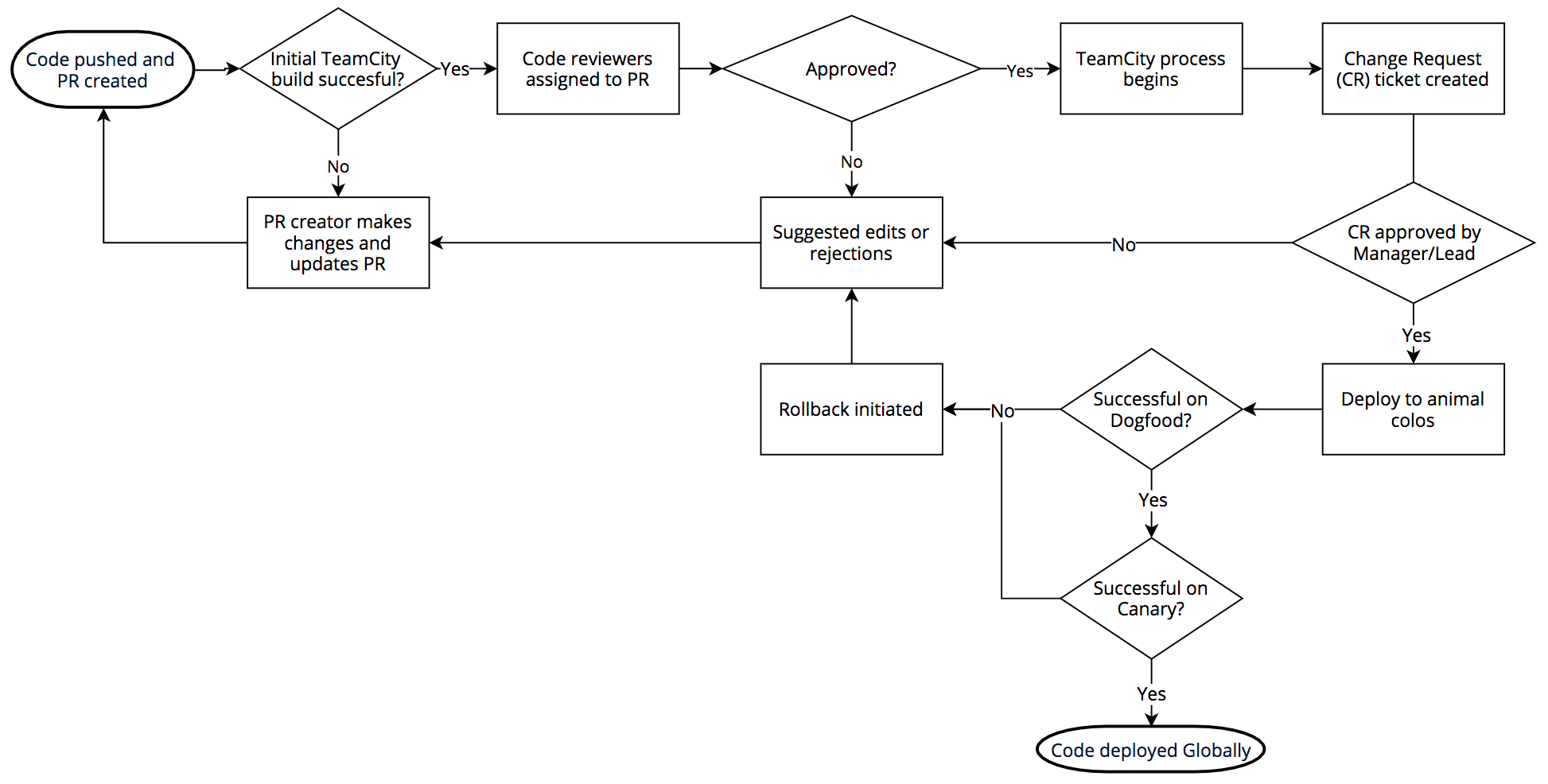
カナリアで正常に動作すると、コードの公開ができるようになります。DOG、PIG、カナリア、グローバル手順の完了には、コード変更の種類にもよりますが数時間から数日ほどかかります。Cloudflareのネットワークやお客様が多様であるおかげで、Cloudflareではリリース内容を世界中の全てのお客様に公開する前に徹底的にコードをテストすることができるのです。しかし、設計上WAFにはこの手順を採用していません。それは脅威に迅速に対応する必要があるからです。
WAFの脅威
過去数年で一般的なアプリケーションにおける脆弱性は大幅に増加しています。これは、ファジングなどといったソフトウェアテストツールの可用性が増加したためです(ファジングに関する新規ブログ記事はこちら)。
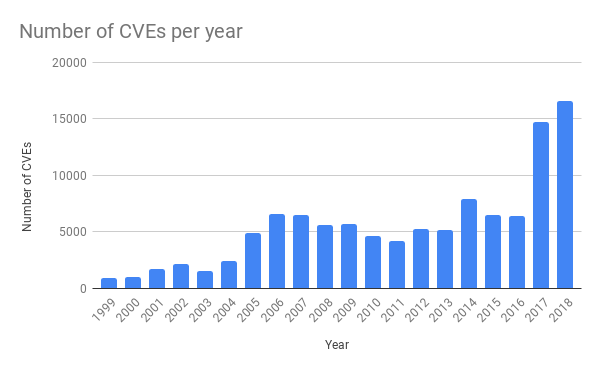
十分な保護ができているかどうかをアプリケーションの実行や維持を行うチームがテストできるよう、概念実証(PoC)が作成されすぐにGithubに公開されるのをよく見かけます。そのため、お客様がこういったソフトウェアに対してパッチを当てられるよう、新たな攻撃にできるだけ早く対応することがCloudflareにとっては必須なのです。
5月にSharePointの脆弱性に対する保護を展開した件はCloudflareが事前にこのような保護を提供できた好例です(ブログはこちら)。発表の公表から間もなく、Cloudflareはお客様のSharePointインストールを悪用しようとする動きが急増したことを確認しました。Cloudflareチームは日々新たな脅威を監視し、お客様のために脅威を軽減するためのルールを記載しています。
先週の火曜日の停止を引き起こしたルールはクロスサイトスクリプティング(XSS)攻撃を対象としたものでした。この攻撃は近年劇的に増加しているものです。
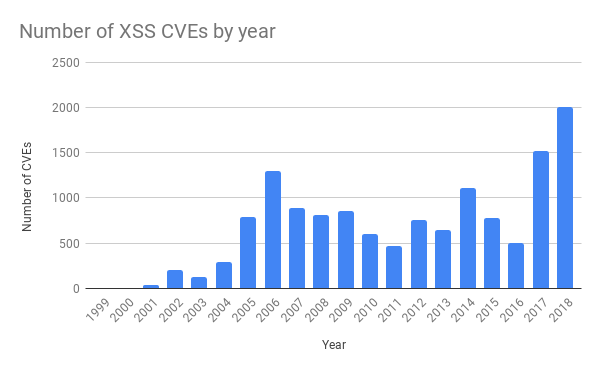
WAFマネージドルールの変更における標準的な手順には、グローバルリリース前に継続的インテグレーション(CI)テストに合格しなければならないことが記載されています。これは先週の火曜日の際にも通常通り実施され、ルールがリリースされました。13時31分、チームのエンジニアが承認済みの変更を含むプルリクエストをマージしました。

13時37分、TeamCityがルールをビルドしてテストを実行し、合格を示す緑色を表示しました。WAFテストスイートはWAFの主な機能が動作することをテストするもので、個別のマッチング機能に対する多数の単体テストで構成されています。単体テストにて個別のWAFを実行した後、WAFに対する大規模なHTTPリクエストを実行してルールをテストします。こういったHTTPリクエストはWAFでブロックすべきリクエストのテスト(攻撃を検出できることの確認)やブロックしてはいけないリクエストのテスト(必要以上にブロックしないことや偽陽性を作り出していないことの確認)向けに設計されたものです。WAFテストスイートが実施しなかったのはCPU使用量の急増テストであり、結果的に今回CPU枯渇の原因となったルールが含まれている以前のWAFビルドのログファイルにはテストスイートの実行時間に増加は見られませんでした。
そしてテストが合格し、TeamCityが自動的に13時42分時点の変更をリリースし始めました。

Quicksilver
WAFルールは新たな脅威に対応する必要があるため、数秒で世界中に変更を適用することのできるCloudflareの分散型Key-Value Store(KVS)、Quicksilverを使用してリリースしています。この技術はCloudflareのダッシュボード内やAPI経由での設定変更時にCloudflareの全てのお客様が使用しているもので、Cloudflareが変更に対して非常に迅速に処理できる理由でもあります。
Quicksilverについてはこれまであまり言及したことがありませんでした。以前CloudflareではKyoto Tycoonを分散型Key-Value Storeとしてグローバルに採用しておりましたが、運用上の問題が発生したため独自KVSを構築して180以上の都市に複製していました。Quicksilverはお客様の設定に変更を加えたり、WAFルールを更新したり、Cloudflare Workersを使用して書いたJavaScriptコードを配信したりするための手段です。
ダッシュボードのボタンをクリックまたはAPI呼び出しを行うことで、変更内容は数秒で世界中に適用されます。お客様にはこの高速に実施できる設定を気に入って頂いておりました。Workersを利用するとほぼ瞬時にグローバルなソフトウェアリリースが行えます。平均的ではQuicksilverは1秒あたりおよそ350件の変更を配信します。
さらに、Quicksilverは非常に高速です。 平均では2.29秒で世界中のマシンへ1つの変更を配信することができます。通常、このスピードは素晴らしいことです。要するに、機能を有効にしたりキャッシュをパージしたりする際、世界中に一瞬で稼働させられるのです。Cloudflare Workersでコードをプッシュすると、同じ速度でプッシュすることができます。これは必要なときに高速で更新ができるという、Cloudflareのお約束の1つです。
しかしながら今回はこのスピードがあることでルール変更が世界中に数秒で適用されたということを意味します。また、WAFコードにLuaを採用していることにお気づきの方もいるかもしれません。Cloudflareの製品には広くLuaを採用しておりますが、WAFのLuaに関する詳細は以前ご説明した通りです。WAFのLuaでは内部的にPCREを利用しているのですが、このPCREがマッチングにバックトラッキングを採用しており正規表現の暴走から保護する手段がありません。これに関する詳細や対策を以下に説明します。

ルールがリリースされた時点までは全てが「正しく」実行されていました。プルリクエストがあがって承認され、CI/CDがコードをビルドしてテストを行い、SOPのロールアウトとロールバックを詳述したSOPと共に変更申請が提出され、ロールアウトが実行されました。

問題点
前述の通り、我々は毎週数十件の新規ルールをリリースし、リリースの悪影響を防止するため多数のシステムを組み込んでいます。そのため、何かおかしなことがあるときは複数の原因に収束することは通常ありません。しかし、1つの根本原因に辿り着くと満足できる一方で、現実が見えなくなることもあります。下記は、CloudflareのHTTP/HTTPSサービスがオフラインになる時点に至るまでの複数の脆弱性です。
- エンジニアが簡単に膨大なバックトラックをしてしまう正規表現を記述しました。
- 数週間前に実施したWAFのリファクタリングにより、正規表現によるCPUの過度な消費を防ぐための保護が誤って削除されていました。このリファクタリングはWAFによるCPU消費を抑えるためのものでした。
- 使用していた正規表現エンジンには複雑性の保証がありませんでした。
- テストスイートに過度なCPU消費を特定する手段がありませんでした。
- 段階的ロールアウトをせずに世界中の本番環境へ緊急性のないルール変更を展開できるようなSOPになっていました。
- WAFの完全なビルドを2回実行するという時間のかかりすぎることがロールバック計画で要求されていました。
- グローバルなトラフィックドロップに対する初めのアラートの発火が遅すぎました。
- Cloudflareのステータスページをすぐに更新できませんでした。
- 停止およびバイパス手順に不慣れだったため、Cloudflare内からのCloudflare独自システムへのアクセスが困難でした。
- セキュリティ上の理由により資格情報がタイムアウトしたため、SREが一部のシステムにアクセスできませんでした。
- Cloudflareのエッジを経由するお客様は、CloudflareのダッシュボードやAPIにアクセスできませんでした。
火曜日以降の動向
まず、WAF上で動作する全リリースを停止して次のことを行いました。
- 過度のCPU利用を行う保護を取り除いた上での再導入(完了)
- WAFマネージドルールにある全3,868件のルールを手動にて調査し、過度のバックトラッキングが発生する可能性があるその他のインスタンスを検出、修正(検査は完了)
- 全ルールに対するパフォーマンスプロファイリングをテストスイートに導入(完了予定: 7月19日)
- 正規表現エンジンをre2またはRustに切り替え(どちらもランタイム保証搭載)(完了予定:7月31日)
- 進行中の攻撃に対する緊急かつグローバルなリリースを実施できる点を保持しつつ、Cloudflareの他のソフトウェアと同じ方法でルールを段階的ロールアウトするようSOPを変更
- CloudflareのダッシュボードやAPIをCloudflareのエッジから外すための緊急機能を設置
- Cloudflareステータスページへの更新の自動化
長期的には、Cloudflareは数年前に私が記述したLuaによるWAFから離脱していく予定です。そして新規ファイアウォールエンジンを採用するようWAFを移植していきます。これによりWAFがより高速になり保護層を追加することができます。
まとめ
本件はお客様にとってもCloudflareチームにとっても大きな混乱を招いた停止でした。我々は事態の収拾のため迅速に対応し、現在は停止を発生させてしまった手順の欠陥を修正し、正規表現に使われている技術を置き換えることでさらなる潜在的問題の防止により一層取り組んでおります。
今回の停止については忸怩たる思いであり、お客様に影響を出してしまったことをお詫び申し上げます。今回の変更により、このような停止が今後再発生しないものと考えております。
付録:正規表現のバックトラッキングについて
(?:(?:\"|'|\]|\}|\\|\d|(?:nan|infinity|true|false|null|undefined|symbol|math)|\`|\-|\+)+[)]*;?((?:\s|-|~|!|{}|\|\||\+)*.*(?:.*=.*))) がどのようにCPU枯渇を引き起こすのかを完全に理解するには、正規表現エンジンの動作を少々理解しておく必要があります。重要なのは.*(?:.*=.*)の部分です。(?:と)は非キャプチャグループです(つまり、カッコ内の表現は1つの表現としてグルーピングされています)。
ここではCPU枯渇の原因となったパターンを説明するため、これを無視して.*.*=.*というパターンを見ていきます。ここまでシンプルにすると、このパターンが不要に複雑であることがわかります。しかし、重要なのは「全てに続く全てにマッチする」ものをエンジンに問い合わせた「実際の」表現(CloudflareのWAFルールに記載された複雑な表現のようなもの)により壊滅的なバックトラッキングを引き起こしたという点です。こちらがその理由です。

正規表現では、.は1文字とのマッチを意味し、.*は0文字以上の貪欲な(greedy)マッチング(つまり可能な限りの数と合致すること)を意味するため、.*.*=.*は、0文字以上のマッチ、0文字以上のマッチ、=リテラルの検索、0文字以上のマッチ、という意味になります。
テスト文字列x=xについて考察してみましょう。これは.*.*=.*にマッチする文字列です。イコールの前にある.*.*が1つ目のxにマッチします(.*のうちの1つがxにマッチしもう一方が0文字にマッチするため)。そして=の後にある.*は最後のxにマッチします。
このマッチングに至るまでには23の手順があります。.*.*=.*にある1つ目の.*が貪欲に(greedy)動作してx=xという文字列全体にマッチします。エンジンは次の.*の考慮に移ります。マッチする文字はもうないので、2つ目の.*は0文字にマッチします(こういう場合もあります)。それからエンジンは=部分に移行します。もうマッチングすべき文字が残っていないので(はじめの.*部分でx=xの全てにマッチしているので)マッチングは失敗します。
ここで正規表現エンジンがバックトラックします。エンジンは1つ目の.*に戻り(x=xではなく)x=とマッチし、それから2つ目の.*に移ります。.*が2つ目のxにマッチするので残りの文字はありません。そこでエンジンが=を.*.*=.*とマッチさせようとするとそのマッチングは失敗します。エンジンはまたバックトラックします。
今回のバックトラックでは1つ目の.*はx=とマッチしますが2つ目の.*はxとマッチするのではなく0文字にマッチします。それからエンジンは.*.*=.*パターンにある=というリテラルを探そうとしますが失敗します(すでに1つ目の.*にマッチしているため)。エンジンはまたバックトラックします。
今度は1つ目の.*がx1文字にマッチします。しかし2つ目の.*が貪欲に動作し、=xとマッチしてしまいます。もうどうなるかわかるでしょう。エンジンが=リテラルのマッチングを探そうとすると失敗して再度バックトラックとなります。
1つ目の.*は1つ目のxとマッチします。そして今回は2つ目の.*が=とのみマッチします。しかし、ご想像どおりエンジンは=にマッチしません。2つ目の.*で既にマッチしているからです。そこでまたバックトラックを行います。ここで思い出していただきたいのですが、これは全て3文字の文字列のマッチングにかかる手順なのです。
最後に、1つ目の.*が1つ目のxに、2つ目の.*が0文字にマッチすると、エンジンは=リテラルと文字列の=をマッチさせることができます。そして最後の.*が最後のxとマッチするのです。
これがx=xにマッチするまでの23の手順です。こちらはPerlのRegexp::Debuggerを使って発生したバックトラッキングの手順を説明した短いビデオです。

これでも作業量が多いのですが、もし文字列がx=xからx=xxに変わったらどうなるでしょうか?この場合のマッチング手順は33です。さらに、入力がx=xxxとなると手順は45になります。直線的な増え方ではありません。ここにx=xからx=xxxxxxxxxxxxxxxxxxxx(=の後のxが20個)までのマッチングを示したグラフがあります。=の後のxが20になると、エンジンのマッチングには555もの手順がかかります。(さらに悪いことに、x=の部分がなく文字列が20個のxだけになった場合、マッチしないパターンを探す手順は4,067になります。)

このビデオではx=xxxxxxxxxxxxxxxxxxxxのマッチングに必要なバックトラッキングを示しています。

残念なことに入力値が増えるとマッチング回数が超線形的に増えています。ただし、もっと悪いのは正規表現に少々の修正が入った場合です。.*.*=.*;という正規表現になった(つまりパターンの最後にセミコロンが追加された)としましょう。これはfoo=bar;のような表現にマッチさせようとして書かれたものです。
この場合のバックトラッキングは最悪です。x=xのマッチには23ではなく90手順もかかります。手順の増加は非常に劇的です。x=の後に20個のxがある場合のマッチングにかかる手順は5,353にも及びます。こちらがそのグラフです。Y軸の値を前回のグラフと比べてみてください。

こちらの画像ではx=xxxxxxxxxxxxxxxxxxxxを.*.*=.*;にマッチさせようとして失敗するまでの全5,353手順を表示しています。

GreedyマッチではなくLazyマッチを用いると、この場合のバックトラッキング数を制限することができます。元の表現を.*?.*?=.*?に変更するとx=xのマッチングは(23手順から)11手順になり、x=xxxxxxxxxxxxxxxxxxxxの場合も同様となります。これは.*の後にある?がエンジンに、移動する前に最小文字数とマッチするよう指示するためです。
しかし、Lazyマッチがこのバックトラッキング行為に対する完全な解決策ではありません。.*.*=.*;という最悪の例を.*?.*?=.*?;に変えても実行回数は全く変わりません。x=xの所要手順は555で、x=の後に20個のxが続く場合の手順数も5,353のままです。
(パターンを完全に書き直してより具体的に記述する以外で)唯一真の解決策となるのが、正規表現エンジンをバックトラッキングの仕組みから退避することです。これは今後数週間で取り組んでいきます。
この問題に対する解決策は1968年のKen Thompson氏による「Programming Techniques:Regular expression search algorithm(プログラミングアルゴリズム:正規表現の検索アルゴリズム)」という論文で知られているものです。この論文では正規表現をNFA(非決定性有限オートマトン)に変換し、その後照合する文字列のサイズで時間線形的に実行するアルゴリズムを用いてNFAの状態遷移をするメカニズムについて説明しています。

この論文で実際にNFAに関する記述があるわけではありませんが、線形時間アルゴリズムに関しては明確に説明されており、IBM 7094用のアセンブリ言語のコードを生成するALGOL60プログラムが提示されています。その実装は難解なものですが、考え方はさほどではありません。

これは.*.*=.*という正規表現をThompson氏の論文の図と同じ形式で図式化したものです。

図0では0から始まる5つの状態があります。そして状態1、2、3から始まるループが3つあります。このループは正規表現にある3つの.*に一致しています。ドットが記載された3つの楕円形がそれぞれ1文字とマッチします。=の楕円形は=とマッチしているということを示しています。状態4は終了状態であり、正規表現がマッチした場合に到達します。
このような状態図を使って.*.*=.*という正規表現のマッチングを行う方法を確認するため、ここではx=xを検証していきます。プログラムは図1の状態0から開始します。

このアルゴリズムの動作のキーとなるのが状態マシンは同時に複数の状態になるという点です。NFAはそれぞれの遷移を同時に行います。
入力読み込みの前でも図2のように状態1と2両方に遷移することが可能です。

図2を見てみると、x=xにある1つ目のxに何が起きたのかを確認できます。xは状態1に遷移して一番上のドットにマッチすることができます。もしくは、xは状態2に移行して2つ目のドットにマッチし、状態2に戻ることができます。
x=xの1つ目のxにマッチした後でも状態は1と2のままです。状態3や4に到達できないのは、リテラル=が必要になるためです。
次に、アルゴリズムはx=xにある=の考察を行います。x同様、上部にある2つのループ(状態1から1、状態2から2のループ)のいずれかにマッチすることができますが、=がマッチするとアルゴリズムは状態2から状態3(そしてすぐに状態4)に遷移します。これは図3で示したとおりです。

次にアルゴリズムはx=xにある最後のxに到達します。状態1や2から同じ遷移が状態1や2に戻ることが可能です。状態3からxは右側にあるドットとマッチして状態3に戻ることができます。
x=xの全文字が考察された時点で状態4に到達するため、この正規表現は文字列にマッチします。各文字が一度処理されるためこのアルゴリズムは入力文字列の長さの点で線形です。さらに、バックトラッキングも必要ありませんでした。
(x=にマッチした後で)一度状態4に到達したらその正規表現はマッチしアルゴリズムは最後のxを全く考察することなく中止になります。
このアルゴリズムは入力サイズの点において線形です。
Détails de la panne Cloudflare du 2 juillet 2019
Il y a près de neuf ans, Cloudflare était une toute petite entreprise dont j’étais le client, et non l’employé. Cloudflare était sorti depuis un mois et un jour, une notification m’alerte que mon petit site, jgc.org, semblait ne plus disposer d’un DNS fonctionnel. Cloudflare avait effectué une modification dans l’utilisation de Protocol Buffers qui avait endommagé le DNS.
J’ai contacté directement Matthew Prince avec un e-mail intitulé « Où est mon DNS ? » et il m’a envoyé une longue réponse technique et détaillée (vous pouvez lire tous nos échanges d’e-mails ici) à laquelle j’ai répondu :
De: John Graham-Cumming
Date: Jeudi 7 octobre 2010 à 09:14
Objet: Re: Où est mon DNS?
À: Matthew Prince
Superbe rapport, merci. Je veillerai à vous appeler s’il y a un
problème. Il serait peut-être judicieux, à un certain moment, d’écrire tout cela dans un article de blog, lorsque vous aurez tous les détails techniques, car je pense que les gens apprécient beaucoup la franchise et l’honnêteté sur ce genre de choses. Surtout si vous y ajoutez les tableaux qui montrent l’augmentation du trafic suite à votre lancement.
Je dispose d’un système robuste de surveillance de mes sites qui m’envoie un Continue reading关于 2019 年 7 月 2 日 Cloudflare 中断的详情
大约九年前,Cloudflare 还是一家小公司,我也还是客户,而不是员工。当时,Cloudflare 早在一个月前就已发布了 jgc.org,有一天警报消息显示,这个小网站似乎不再支持 DNS 了。Cloudflare 实施了一项对 Protocol Buffers 使用的改动,这破坏了 DNS。
我直接给 Matthew Prince 写了一封题为“我的 DNS 在哪儿?”的邮件,他回复了一封篇幅很长、内容详实的技术性解答邮件(您可以点击此处查看往来邮件的全部内容),我对该邮件的回复是:
发件人:John Graham-Cumming
日期:2010 年 10 月 7 日星期四上午 9:14
主题:回复:我的 DNS 在哪儿?
收件人:Matthew Prince
谢谢,这是一篇很棒的报告。如果有问题,我一定会去电
问询。 就某种程度而言,在掌握了所有技术细节后,
将它们撰写为一篇博客文章可能会更好,因为我认为
读者会非常感谢博主对这些信息的坦诚公开。
这一点在您看到文章发布后流量增加的图表时,
会感触更深。
我在密切监控着网站,以便在出现任何故障时能够
收到短信通知。 监控显示,我的网站在 13:03:07 至
14:04:12 期间流量下降。 我会每五分钟测试一次。
这只是个小插曲,我相信您会解决这个问题。 但您确定您不需要
有人在欧洲为您分忧吗?:-)
他的回复是:
发件人:Matthew Prince
日期:2010 年 10 月 7 日星期四上午 9:57
主题:回复:我的 DNS 在哪儿?
收件人:John Graham-Cumming
谢谢。我们已经回复了所有来信。我现在要去办公室,
我们会在博客上发布些信息,或在我们的公告栏系统中
置顶一篇官方帖文。我同意 100%
透明度是最好的。
因此,今天,作为规模远胜以往的 Cloudflare 公司的一员,我要写一篇文章,清楚讲述我们所犯的错误、它的影响以及我们正在为此采取的行动。
7 月 2 日事件
7 月 2 日,我们在 WAF 托管规则中部署了一项新规则,导致全球 Cloudflare 网络上负责处理 HTTP/HTTPS 流量的各 CPU 核心上的 CPU 耗尽。我们在不断改进 WAF 托管规则,以应对新的漏洞和威胁。例如,我们在 5 月份以更新 WAF 的速度出台了一项规则,以防范严重的 SharePoint 漏洞。能够快速地全局部署规则是 WAF 的一个重要特征。
遗憾的是,上周二的更新中包含了一个规则表达式,它在极大程度上回溯并耗尽了用于 HTTP/HTTPS 服务的 CPU。这降低了 Cloudflare 的核心代理、CDN 和 WAF 功能。下图显示了专用于服务 HTTP/HTTPS 流量的 CPU,在我们网络中的服务器上,这些 CPU 的使用率几乎达到了 100%。

这导致我们的客户(以及他们的客户)在访问任何 Cloudflare 域时都会看到 502 错误页面。502 错误是由前端 Cloudflare Web 服务器生成的,这些服务器仍有可用的 CPU 内核,但无法访问服务 HTTP/HTTPS 流量的进程。

我们知道这对我们的客户造成了多大的伤害。我们为发生这种事件感到羞耻。在我们处理这一事件时,它也对我们自身的运营产生了负面影响。
如果您是我们的客户,您也一定感受到了难以置信的压力、沮丧和恐惧。更令人懊恼的是,我们的六年零全球中断记录也就此打破。
CPU 耗尽是由一个 WAF 规则引起的,该规则里包含不严谨的正则表达式,最终导致了过多的回溯。作为中断核心诱因的正则表达式是 (?:(?:\"|'|\]|\}|\\|\d|(?:nan|infinity|true|false|null|undefined|symbol|math)|\`|\-|\+)+[)]*;?((?:\s|-|~|!|{}|\|\||\+)*.*(?:.*=.*)))
尽管正则表达式本身成为很多人关注的焦点(下文将进行详细讨论),但 Cloudflare 服务中断 27 分钟的真实情况要比“正则表达式出错”复杂得多。我们已经花时间写下了导致中断并使我们无法快速响应的一系列事件。如果您想了解更多关于正则表达式回溯以及如何处理该问题的信息,可在本文末尾的附录中查找。
发生了什么情况
我们按事情发生的先后次序讲述。本博客中的所有时间均为协调世界时 (UTC)。
在 13:42,防火墙团队的一名工程师通过一个自动过程对 XSS 检测规则进行了微小改动。这生成了变更请求票证。我们使用 Jira 管理这些票证,下面是截图。
三分钟后,第一个 PagerDuty 页面出现,显示 WAF 故障。这是一项综合测试,从 Cloudflare 外部检查 WAF 的功能(我们会进行数百个此类测试),以确保其正常工作。紧接着出现了多个页面,显示许多其他的 Cloudflare 服务端到端测试失败、全球流量下降警报、众多的 502 错误,之后便是我们在全球各城市的网点 (PoP) 发来的大量指示 CPU 耗尽的报告。


我收到了其中部分警告并立马起身走出会议室,而正在我回到办公桌的途中,解决方案工程师团队的一名负责人告诉我,我们的流量已经减少了 80%。我跑向 SRE 团队,他们正在排除故障。在中断的最初时刻,有人猜测这是某种我们从未见过的攻击。

Cloudflare 的 SRE 团队成员分布在世界各地,他们全天持续监控着网络。绝大多数此类警报都指出了局部区域有限范围内的非常具体的问题,这些警报均在内部仪表板中监控,并且每天会进行多次处理。但这种页面和警报模式表明发生了严重问题,SRE 立即宣布发生 P0 事件,并上报给工程领导层和系统工程部门。
当时,伦敦工程团队正在我们的主要活动场地听取一场内部技术讲座。讲座被打断,所有人都聚集在大型会议室中,商讨问题或是接打电话。这不是 SRE 能够独立处理的一般问题,它需要所有相关团队立即在线联合处理。
在 14:00,WAF 被确定为导致问题的部分原因,并排除了攻击的可能性。性能团队从一台清楚表明 WAF Continue reading
Details zum Cloudflare-Ausfall am 2. Juli 2019
Vor etwa neun Jahren war Cloudflare noch ein winziges Unternehmen und ich war ein Kunde, kein Mitarbeiter. Cloudflare gab es erst seit einem Monat. Eines Tages wurde ich darüber benachrichtigt, dass bei meiner kleinen Website jgc.org der DNS-Service nicht mehr funktionierte. Cloudflare hat seine Verwendung von Protocol Buffers angepasst und dadurch wurde der DNS-Service unterbrochen.
Ich habe eine E-Mail mit dem Titel „Where‘s my dns?“ (Wo ist mein DNS) direkt an Matthew Prince gesendet und er hat mit einer langen, detaillierten, technischen Erklärung reagiert (Sie können den vollständigen E-Mail-Austausch hier lesen), auf die ich antwortete:
Von: John Graham-Cumming
Datum: Do., 7. Okt. 2010 um 09:14
Betreff: Re: Wo ist mein DNS?
An: Matthew Prince
Toller Bericht, danke. Ich werde auf jeden Fall anrufen, wenn es ein
Problem geben sollte. Es wäre wahrscheinlich sinnvoll, all das in
einem Blog-Beitrag festzuhalten, wenn Sie alle technischen Details haben. Ich glaube nämlich,
dass es Kunden wirklich zu schätzen wissen, wenn mit solchen Dingen offen und ehrlich umgegangen wird.
Sie könnten auch die Traffic-Zunahme nach der Implementierung mit
Diagrammen veranschaulichen.
Ich habe eine recht zuverlässige Überwachung für meine Websites eingerichtet, deshalb bekomme ich eine SMS, wenn
etwas ausfällt. Meine Daten zeigen, Continue reading